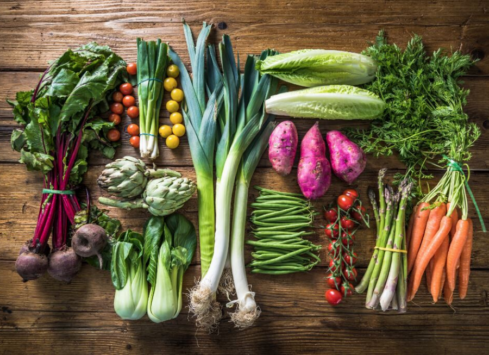Café Nourish – Knowing the Story Behind the Food
When Café Nourish opened last fall at Regional Health Rapid City Hospital in South Dakota, Morrison Healthcare Chef Scott Brinker decided to be a game-changer – create tasty, healthy meals with buying fresh, sustainable food from local farmers, and still stop food waste.

Working closely with local farmers, his café is stocked with fresh, sustainable food. He buys 80 percent of his beef and 90 percent of his produce from local farms. The beef comes from Criollo cows grown at the local Evergreen Ranching and Livestock and all vegetables from local farms – which he visits regularly — are free of pesticides, chemicals and fertilizers.
“My tomato farmer grows her vegetables just for me,” Chef Brinker says. “I call her on Fridays; find out what she has ready. She’ll deliver 250 – 300 pounds of tomatoes, usually on Tuesdays. She’ll also provide us with 150 pounds of green peppers, leafy greens, cucumbers and plenty of other fresh vegetables.”
To season all food, Chef Brinker grows basil, rosemary, lemongrass and other herbs in an outdoor garden and greenhouse. And to reduce food waste, he composts vegetable scraps and coffee grounds in the garden.
The chef’s ability to get fresh produce makes the café and patient meals healthier. “Our patients know the story behind their food,” he says. “When they tell me, ‘Wow, that was a really good salad’, I tell them the beets and other vegetables are grown on a farm 20 minutes outside of town. Eating fresh food gives them more confidence in the hospital and their overall health care.”

Located just 23 miles from historic Mount Rushmore, the newly-remodeled café serves roughly 1,500 meals per day at the 417-bed facility. There is also a new outdoor area with a grill and patio seating, plus a smoker unit to produce various smoked meats.
The indoor renovation included new flooring and décor as well as new cooking and holding equipment, including a built-in salad bar, new display units for refrigerated grab and go options and a new deli bar with made-to-order service.
The café also has a grill with a daily grilled sandwich special along with a regular menu, a “superfood” station that emphasizes a different superfood each month in its offerings, an Italian station offering house-made pizzas, strombolis and calzones.
Since its opening, sales at Café Nourish are popping – a good sign that people like what they see.
“People are spending an average of 62 cents more in our café now than a year ago,” says Pete Mcquiston, senior director of food and nutrition. “Our ability to serve high-quality food, often made by local farmers, at competitive rates, has been substantial.”
McQuiston also credits a strong relationship with the hospital administration to promote the café and its healthy food. Digital messages that display daily menus and special events are seen on televisions throughout the hospital, which helps drive traffic.
Since South Dakota’s cold winters help keep people inside the building, the café will see an uptick in traffic once the cold weather comes. To top it off, the café hosts a Christmas party for the hospital in late December, providing free food and transforming the café into a winter wonderland.
Chef Brinker regularly promotes the local farmers at Café Nourish. He hosts farm-to-table cookouts and often invites them to sell their food to hospital visitors and the public.
Booths on a patio outside of the café allow people to buy fresh beef and lamb from local farmers; buns and bread from a local wheat grower and tomatoes and cucumbers from another local farmer. “The money we spend with local farmers helps our local economy. It also shows our caregivers the value of fresh food.”
Chef Brinker’s sustainability strategy works long after the local growing season ends, storing several crops in a dry room before cold weather sets in. He buys squash in September and will serve beets, onions and carrots through November that have been stored in local farmer’s storage facilities.

In addition to health benefits, Chef Brinker is proud his food purchases are an integral part of the local economy. “We’re not only giving people control over the food they eat, but we’re helping local farms thrive and keep jobs in the community. The money I would be spending to bring food in, stays here. Our local economy – the people we care for here and their families – receive the benefits. I like that.”





